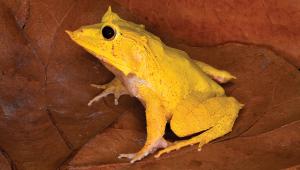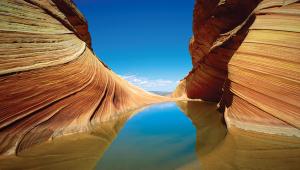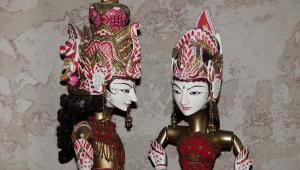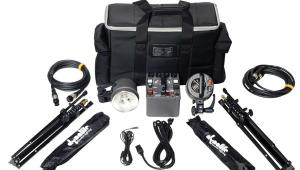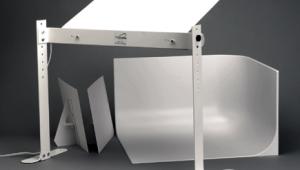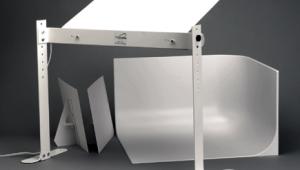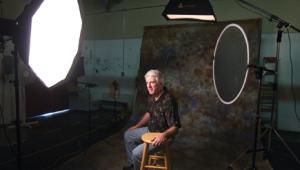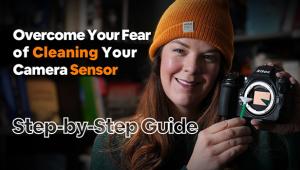Tabletop Photography
Controlling Shadows And Contrast With Light Tents And Cocoons
When it comes to lighting
tabletops, professional photographers often opt for the sweep table.
A sweep table looks like an oversized chair, but, instead of cushions,
it comes in an assemblage consisting of an upward curving, or |
|||
While utilitarian, sweep tables have their limitations. They are often expensive, bulky, inflexible, and not portable. They are not necessarily the best or most expedient solution for tabletop subjects with shiny and highly reflective surfaces, unless you don't mind all the added work that would be required in tackling these problems. Simply stated, there is a simpler way to light some otherwise difficult tabletop setups. Enter Light Tents And
Cocoons |
|||
The Westcott Conical
Light Tent |
|||
Because of its upward tapering
design, the tent won't accommodate sweeping backdrops. That doesn't
mean that you can't fashion a usable solution. This tent has a touch
fastener opening at the apex--normally for the lens, for a straight-down
view. Instead, I used the top slit as an anchor point, pulling Mylar material
up through there, then draped the material around the subject. |
|||
The RedWing Plastic
Cocoon |
|||
The Lastolite Cubelite:
Self-Standing, Yet Collapsible |
|||
The very thin fabric efficiently
allows light to pass through, while at the same time bouncing light back
onto the enclosed subject. So, on the one hand you have a soft light;
on the other you have bounce light filling in shadows. Having said that,
the roomy interior, especially on the 3-foot model I used, does not reflect
light as well. That means bounce cards may be called for. On the other
hand, the spacious interior also allows you to set up black cards to pull
back some of the light and add subtle contrasts of tone. Larger cocoons
generally serve best with larger subjects. I found the 3-foot size a bit
much for my needs. Unfortunately, the 2-foot size wasn't available
in time for this story. That would have been my ideal choice. A Guiding Principle Helpful Resources/Light
Tents & Cocoons: Where To Get Them (Or Find Out More About Them) Online |
- Log in or register to post comments








